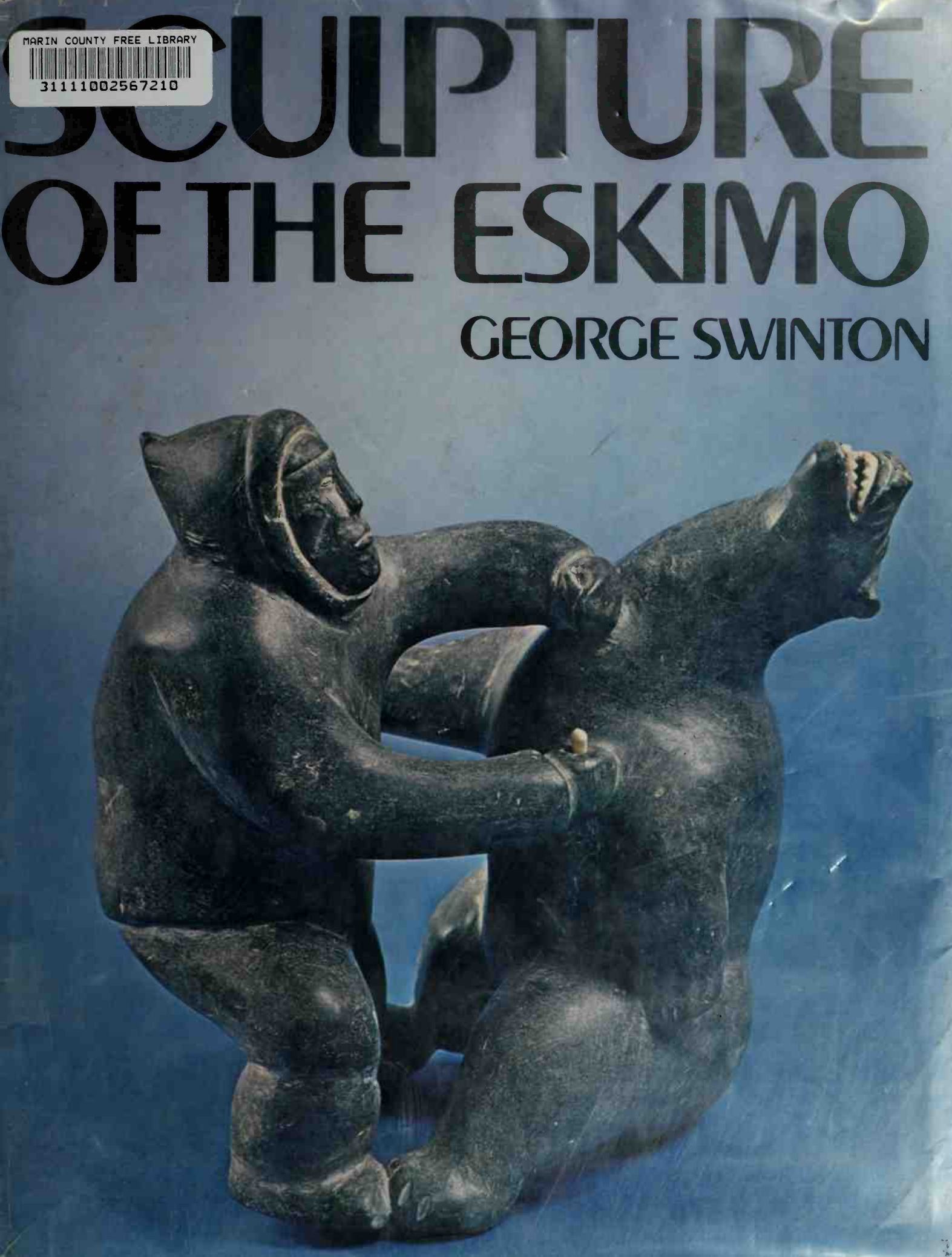|
|
George Swinton. Sculpture of the Escimo. — Greenwich, Connecticut, 1972  Sculpture of the Escimo / George Swinton. — Greenwich, Connecticut : New York Graphic Society, 1972. — 255 p., ill.
37 colour plates, 770 black and white photographs
The photographs in this book constitute the most thorough visual record of Eskimo sculpture ever to be compiled, presenting most of the important pieces and spanning all of the phases from prehistory to the present. A magnificent pictorial chronicle and a sensitive appreciation of this highly individualistic art form, Sculpture of the Eskimo docs not set out to judge or analyse but to reveal the aesthetic experience and profound beauty of these finely crafted carvings and sculptures, approaching them as works of art rather than as archaeological or anthropological phenomena.
These are creations of distinctive power and beautv – shaped both with primitive tools and modem implements from a variety of materials... ivory, bone, antler, wood, and in more recent times, stone. In a commentary that covers the environment, history, and culture from which these works have arisen, Professor Swinton traces Eskimo carving's gradual transition from magical objects needed for one’s spiritual development to functional, decorative objects for self-entertainment and a world-wide market. He explains the basic Eskimo aesthetic principle of sananguaq – a likeness of a real or imagined subject – and provides the most thorough survey to date of contemporary Eskimo sculptors. He examines their work, records their own statements about it, and relates pictorially the various styles and subject matters within the Arctic.
Not only is this book a visual catalogue of Eskimo sculpture, it includes the first illustrated compendium of artists’ works and a complete bibliography on the subject. This superb volume is a significant contribution to art history and a valuable presentation of a unique, impressive, and exceedingly beautiful art form.
About the Author
As well as being one of the foremost authorities on Eskimo sculpture, George Swinton is a gifted artist in his own right, with over thirty one-man shows to his credit. A Professor at the University of Manitoba’s School of Fine Art and a member of the Canadian Eskimo Arts Council, he has devoted himself for twenty years to the study of Eskimo sculpture, making yearly trips to the Arctic to research prehistoric Eskimo art and to live among and study the work of contemporary Eskimo sculptors.
Through his writings in Artscanncla, Beaver, and other magazines, through radio and television shows, and countless lecture tours he has helped to extend throughout North America and Europe the understanding and appreciation of the aesthetic experience of Eskimo sculpture.
Foreword
This book is an attempt to put into pictures and words a world that I have known and loved for some twenty years. The more I have experienced this world – the more I have come to know it and about it – the more difficult it has become for me to transform my feelings and my knowledge into words that say: I know, I really know; let me tell you exactly what I feel; and come, share my experiences with me.
It would be absurd for me to infer that anyone can know and write about art in a factual way. Art awareness and experience are predominantly sensory, non-verbal, imagistic, and ambiguous. I have therefore relied largely on photographs and photographic interpretations. Descriptions often create an illusion of understanding, while pictures are capable of stimulating sensory awareness and participation as well as intellectual recognition. For both the appreciation and the history of art require the combined involvement of the observer’s heart, mind, and senses so that he may feel, take sides, suffer, enjoy, reject, accept, adore, discover, and experience with the artist and for himself. Involvement in art – creation, history, or appreciation – is passionate, not passive. The purpose of this book is therefore to reveal not to instruct.
The book itself, in addition to being an affirmation of my faith and a disclosure of my feelings, also attempts to come to grips with the nature of our continuous intrusions, the aesthetics of contemporary Eskimo artists, and their feelings toward art and contemporary life. As an expression of my gratitude I dedicate this book to them.
Contents
Foreword 6
Acknowledgements 7
Introduction 13
The Varieties of Eskimo Sculpture 27
The Sananguaq-Art Concept 105
1 The Environment 107
2 Two Principles of Eskimo Survival: Adaptation and Change 109
3 Cultural Patterns 111
4 The Development of Prehistoric Eskimo Art 114
5 The Development of Art in Historic Times 119
6 The Development of Art Since 1948/49 123
7 Differences in Culture and Motivation 127
8 Aesthetics – Inuit vs. Kablunait 129
9 The New Art Form 135
10 The Place of Eskimo Art 143
Catalogue of Artists by Area 145
Bibliography 244
General Index 252
Index of Artists 253
Photo Credits 255
Sample pages 
Download link (pdf, yandexdisk; 42,7 MB).
14 января 2021, 15:09
0 комментариев
|
Партнёры
|






Комментарии
Добавить комментарий